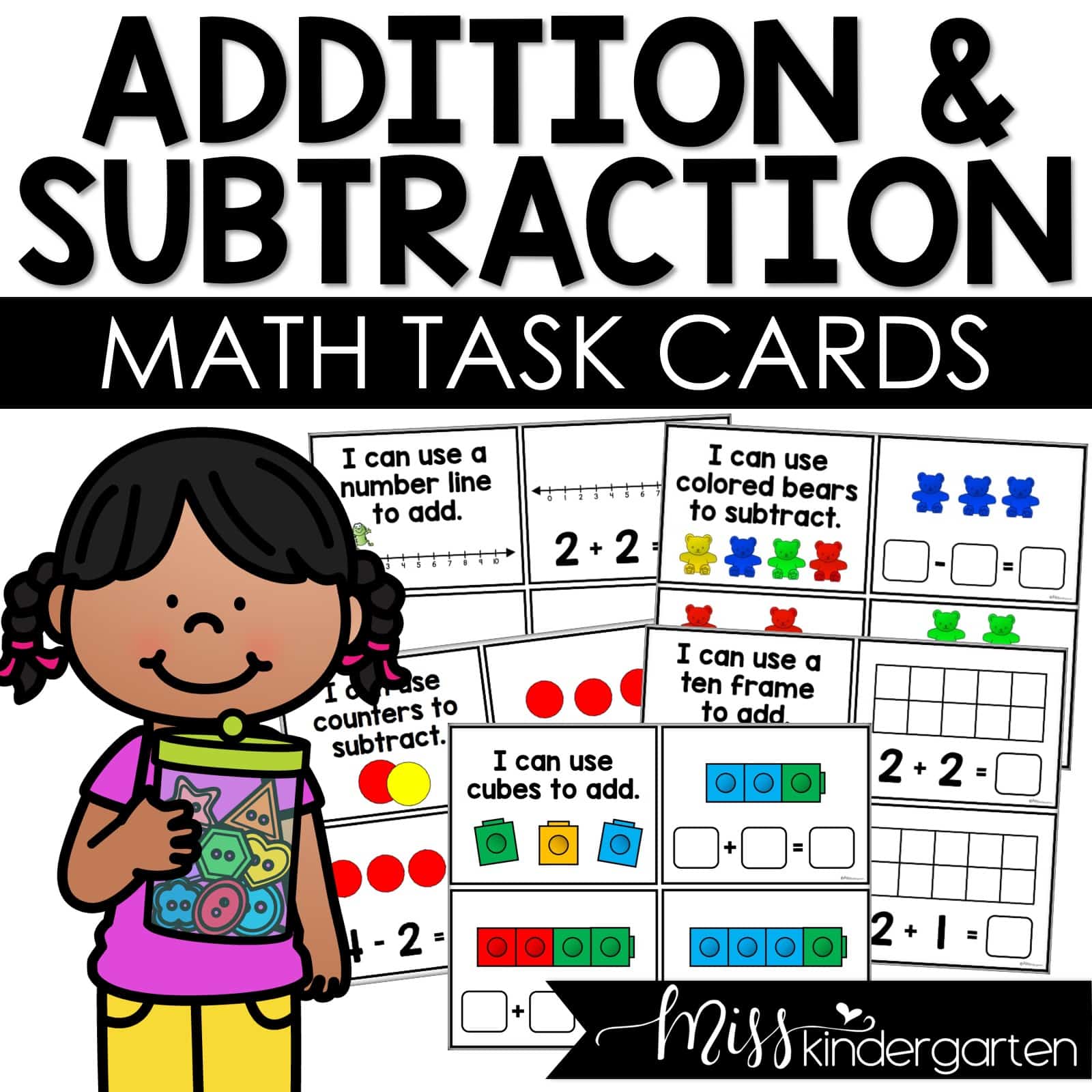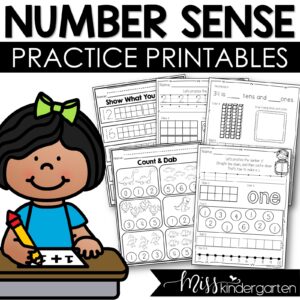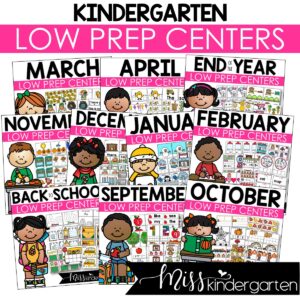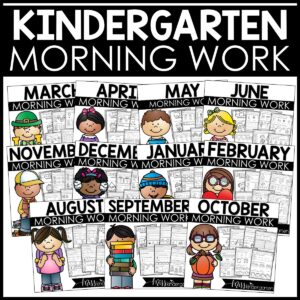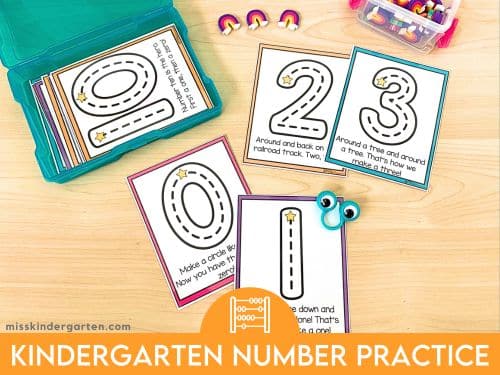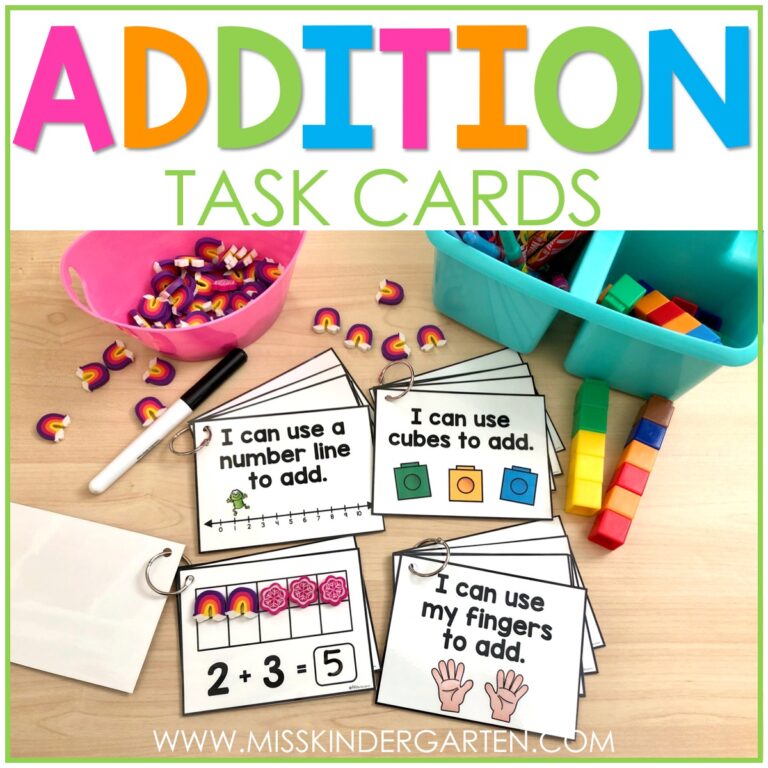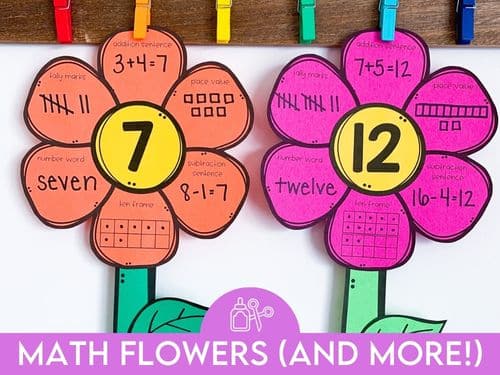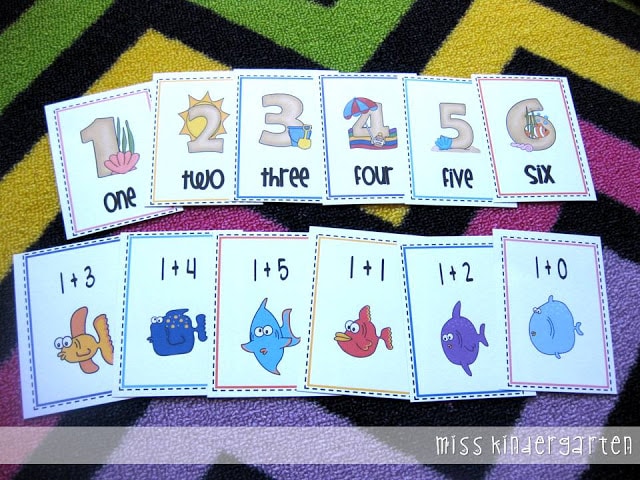Addition Task Cards for Kindergarten Math Practice
Addition can be a tricky task for kindergarten students to understand. That’s why it’s helpful for them to learn a variety of concrete strategies that will help them grasp this concept. The more practice that students have with addition strategies, the better! In this post, I’m going to share some tips for using Addition Task Cards for kindergarten math practice. Your students will get the repetition they need with engaging, hands-on activities.
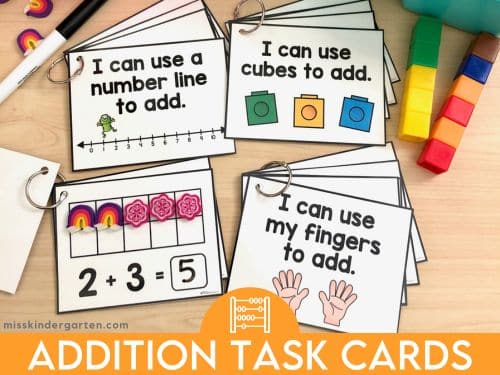
What Are Addition Task Cards?
Addition task cards are small printable activities that provide an addition equation for students to solve. There is usually space to use a manipulative or another strategy to solve the problem. There is also space to write the sum that completes the addition sentence.
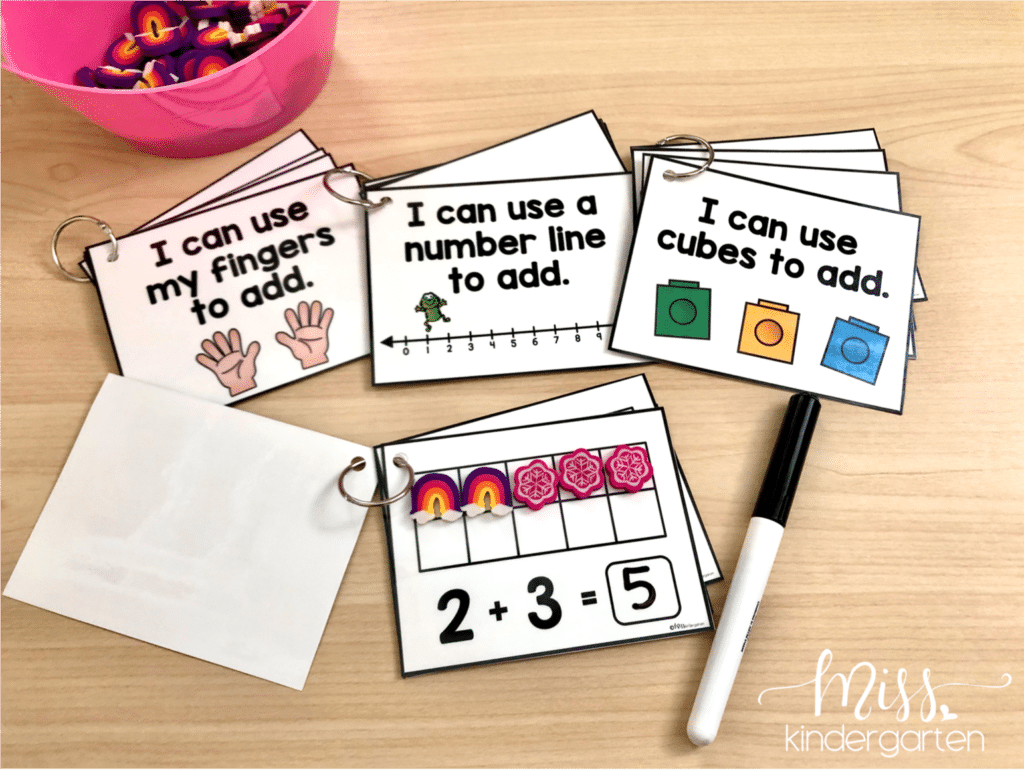
Addition task cards are easy to set up! Just laminate the cards, hole punch them in the corner, and then assemble them into booklets using a binder ring. I like to group addition task cards by strategy, so students can have multiple opportunities to review addition with one strategy at a time.
These cards also fit perfectly into photo storage boxes, if you’d like to organize them that way. This is handy for task cards that use addition with manipulatives to help students solve the problem. The manipulatives and cards can be stored in one place so they’re ready to grab and go!
4 Addition Strategies to Practice with Task Cards
There are many different addition strategies that students should try as they learn how to add. In fact, I’ve written a blog post about all of my favorite math strategies. For this post, I wanted to highlight some of my favorite strategies to practice with kindergarten math task cards. I wanted to show how these little cards can provide a lot of engaging review with a variety of strategies!
1. Using Fingers to Add
Finger counting is an important skill to teach to our students, because they will always have access to this strategy. Students can use the task card to help them put up the given number of fingers on each hand, then they will count the total number of fingers they’re holding up.

2. Using Cubes to Add
Even though fingers are a great tool to help students with addition practice, it’s important for them to have other strategies to use when needed. For example, adding with cubes is helpful because students can physically put two groups of blocks together to create the sum. They can easily visualize how the two numbers combine to create a total number of cubes. This is also a helpful strategy because students can use more than 10 cubes when it’s time to practice adding larger numbers.

3. Using a Number Line to Add
Addition task cards can also help students become more familiar with using a number line. Students will model the addition equation on the card by circling the first number and then “hopping” up the number line. There is space provided on the task card for them to write the number they land on. Number lines are an important tool for future math concepts, so it’s helpful for students to become comfortable with them early on.

4. Using a Ten Frame to Add
You an also help students practice addition using ten frames with kindergarten task cards. Each task card has a blank ten frame where students can model the addition problem given. Once they have added the two groups of manipulatives to the task card, they can count up the total and write the sum on the card.
Just like number lines, ten frames are a very helpful tool for more challenging math concepts in the future. For example, ten frames can help students visualize and understand teen numbers when the time comes. Ten frames are also great for subitization practice!

3 Ways to Use Task Cards for Addition Practice
Once you have these math task cards printed off and ready to go, you can use them throughout your daily learning routine for extra practice with addition.
- Math Centers: These cards are perfect for math center rotations! Students can work their way through the task cards using the strategy you decide to target. You can even have students fill out recording sheets to increase accountability for the center. These activities are also easy for students to reset before moving on to the next station.
- Morning Work: Since the format of these activities is the same and it’s just the strategies that change, students will know just what to do if they see these task cards at their table first thing in the morning. They’ll be able to get right to work on addition practice with morning work that helps them ease into a day of learning.
- Early Finishers: If you’d like to keep your students engaged in meaningful activities while they wait for the next classroom activity to begin, task cards are a great option! Since these task cards are grab-and-go, they’re easy to set out for students who get their work done a little bit early. Plus, they’re also easy to clean up!
Printable Addition Task Cards for Kindergarten
Would you like to use addition task cards in your classroom for more hands-on math practice? I’ve put together a set of Printable Task Cards that are easy to prep and add to your daily math review. These task cards include the four strategies mentioned in this post along with eight others, for a total of 12 addition strategies. This set of task cards also includes subtraction when your students are ready for that review.
These task cards can help your students find strategies that work best for them so they can become more confident with addition. Just click below to take a closer look at everything included in this resource.
Addition and Subtraction Task Cards
Save These Tips for Kindergarten Addition Practice
Be sure to save this post if you’d like to come back to it later! Just add the pin below to your favorite math board on Pinterest. You’ll be able to quickly find these tips and resources when you’re looking for ways to keep your students engaged in addition practice.


